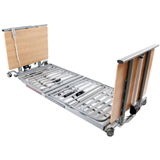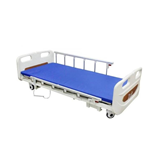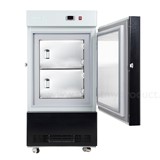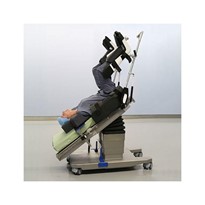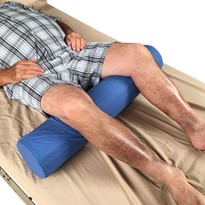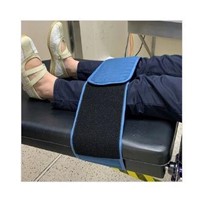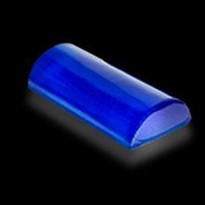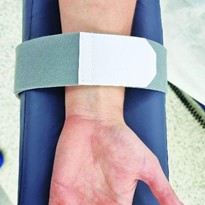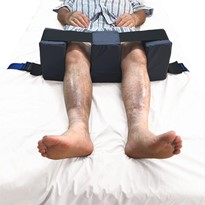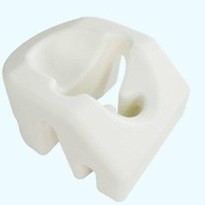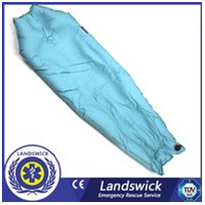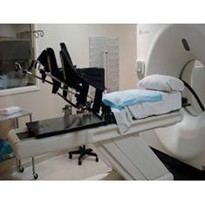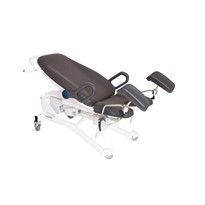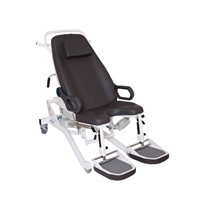This might be a person with decreased mobility and/or sensibility, people with deformities, spasticity, pain and people with pressure sores who are at risk of developing pressure sores.
Positioning is also relevant to people with cognitive disorders such as Alzheimer’s and those who are restless and unpredictable. It is relevant for people with temporary conditions, e.g. those who have undergone surgery and are in recovery or those who are pregnant.
As mentioned above, there are many situations in which a person would benefit greatly from the correct positioning and hence it needs to be a natural part of treatment and preventative measures.
What are the goals of proper patient positioning?
- Maintain the patient’s airway and circulation throughout the procedure
- Prevent nerve damage
- Allow surgeon accessibility to the surgical site as well as for anesthetic administration
- Provide comfort and safety to the patient
- Prevent soft tissue or musculoskeletal and other patient injury
Also known as semi-sitting position, is a bed position where the head of the bed is elevated 45 to 60 degrees. Variations of Fowler’s position include: low Fowler’s (15 to 30 degrees), semi-Fowler’s (30 to 45 degrees), and high Fowler’s (nearly vertical).
- Promotes lung expansion. Fowler’s position is used for patients who have difficulty breathing because in this position, gravity pulls the diaphragm downward allowing greater chest and lung expansion.
- Useful for NGT. Fowler’s position is useful for patients who have cardiac, respiratory, or neurological problems and is often optimal for patients who have nasogastric tube in place.
- Prepare for walking. Fowler’s is also used to prepare the patient for dangling or walking. Nurses should watch out for dizziness or faintness during change of position.
- Poor neck alignment. Placing an overly large pillow behind the patient’s head may promote the development of neck flexion contractures. Encourage patient to rest without pillows for a few hours each day to extend the neck fully.
- Used in some surgeries. Fowler’s position is usually used in surgeries that involve neurosurgery or the shoulders
- Use a footboard. Using a footboard is recommended to keep the patient’s feet in proper alignment and to help prevent foot drop.
- Etymology. Fowler’s position is named after George Ryerson Fowler who saw it as a way to decrease mortality of peritonitis.
In lateral or side-lying position, the patient lies on one side of the body with the top leg in front of the bottom leg and the hip and knee flexed. Flexing the top hip and knee and placing this leg in front of the body creates a wider, triangular base of support and achieves greater stability. Increase in flexion of the top hip and knee provides greater stability and balance. This flexion reduces lordosis and promotes good back alignment.
- Relieves pressure on the sacrum and heels. Lateral position helps relieve pressure on the sacrum and heels especially for people who sit or are confined to bed rest in supine or Fowler’s position.
- Body weight distribution. In this position, most of the body weight is distributed to the lateral aspect of the lower scapula, the lateral aspect of the ilium, and the greater trochanter of the femur.
- Support pillows needed. To correctly position the patient in lateral position, use of support pillows are needed.
Lithotomy is a patient position in which the patient is on their back with hips and knees flexed and thighs apart.
- Lithotomy position is commonly used for vaginal examinations and childbirth.
- Modifications of the lithotomy position include low, standard, high, hemi, and exaggerated based on how high the lower body is raised or elevated for the procedure. Please check with your facility’s guidelines but typically:
- Low Lithotomy Position: The patient’s hips are flexed until the angle between the posterior surface of the patient’s thighs and the O.R. bed surface is 40 degrees to 60 degrees. The patient’s lower legs are parallel with the O.R. bed.2
- Standard Lithotomy Position: The patient’s hips are flexed until the angle between the posterior surface of the patient’s thighs and the O.R. bed surface is 80 degrees to 100 degrees. The patient’s lower legs are parallel with the O.R. bed.
- Hemilithotomy Position: The patient’s non-operative leg is positioned in standard lithotomy. The patient’s operative leg may be placed in traction.
- High Lithotomy Position: The patient’s hips are flexed until the angle between the posterior surface of the patient’s thighs and the O.R. bed surface is 110 degrees to 120 degrees. The patient’s lower legs are flexed.
- Exaggerated Lithotomy Position: The patient’s hips are flexed until the angle between the posterior surface of the patient’s thighs and the O.R. bed surface is 130 degrees to 150 degrees. The patient’s lower legs are almost vertical.
In prone position, the patient lies on the abdomen with head turned to one side and the hips are not flexed.
- Extension of hips and knee joints. Prone position is the only bed position that allows full extension of the hip and knee joints. It also helps to prevent flexion contractures of the hips and knees.
- Contraindicated for spine problems. The pull of gravity on the trunk when the patient lies prone produces marked lordosis or forward curvature of the spine thus contraindicated for patients with spinal problems. Prone position should only be used when the client’s back is correctly aligned.
- Drainage of secretions. Prone position also promotes drainage from the mouth and useful for clients who are unconscious or those recover from surgery of the mouth or throat.
- Placing support in prone. To support a patient lying in prone, place a pillow under the head and a small pillow or a towel roll under the abdomen.
- In surgery. Prone position is often used for neurosurgery, in most neck and spine surgeries.
Reverse Trendelenburg’s is a patient position wherein the head of the bed is elevated with the foot of the bed down. It is the opposite of Trendelenburg’s position.
- Gastrointestinal problems. Reverse trendelenburg is often used for patients with gastrointestinal problems as it helps minimize esophageal reflux.
- Prevent rapid change of position. Patients with decreased cardiac output may not tolerate rapid movement or change from a supine to a more erect position. Watch out for rapid hypotension. It can be minimized by gradually changing the patient’s position.
- Prevent esophageal reflux. Promotes stomach emptying and prevents reflux for clients with hiatal hernia.
Sim’s Position
Sims’ position or semiprone position is when the patient assumes a posture halfway between the lateral and the prone positions. The lower arm is positioned behind the client, and the upper arm is flexed at the shoulder and the elbow. The upper leg is more acutely flexed at both the hip and the knee, than is the lower one.
- Prevents aspiration of fluids. Sims’ may be used for unconscious clients because it facilitates drainage from the mouth and prevents aspiration of fluids.
- Reduces lower body pressure. It is also used for paralyzed clients because it reduces pressure over the sacrum and greater trochanter of the hip.
- Perineal area visualization and treatment. It is often used for clients receiving enemas and occasionally for clients undergoing examinations or treatments of the perineal area.
- Pregnant women comfort. Pregnant women may find the Sims position comfortable for sleeping.
- Promote body alignment with pillows. Support proper body alignment in Sims’ position by placing a pillow underneath the patient’s head and under the upper arm to prevent internal rotation. Place another pillow between legs.
Supine position, or dorsal recumbent, is wherein the patient lies flat on the back with head and shoulders slightly elevated using a pillow unless contraindicated (e.g., spinal anesthesia, spinal surgery).
- Variation in position. In supine position, legs may be extended or slightly bent with arms up or down. It provides comfort in general for patients under recovery after some types of surgery.
- Most commonly used position. Supine position is used for general examination or physical assessment.
- Watch out for skin breakdown. Supine position may put patients at risk for pressure ulcers and nerve damage. Assess for skin breakdown and pad bony prominences.
- Support for supine position. Small pillows may be placed under the head to and lumbar curvature. Heels must be protected from pressure by using a pillow or ankle roll. Prevent prolonged plantar flexion and stretch injury of the feet by placing a padded footboard.
- Supine position in surgery. Supine is frequently used on procedures involving the anterior surface of the body (e.g., abdominal area, cardiac, thoracic area). A small pillow or donut should be used to stabilize the head, as extreme rotation of the head during surgery can lead to occlusion of the vertebral artery.
Trendelenburg
Trendelenburg’s position involves lowering the head of the bed and raising the foot of the bed of the patient. The patient’s arms should be tucked at their sides
- Promotes venous return. Hypotensive patients can benefit from this position because it promotes venous return.
- Postural drainage. Trendelenburg’s position is used to provide postural drainage of the basal lung lobes. Watch out for dyspnea, some patients may require only a moderate tilt or a shorter time in this position during postural drainage. Adjust as tolerated.


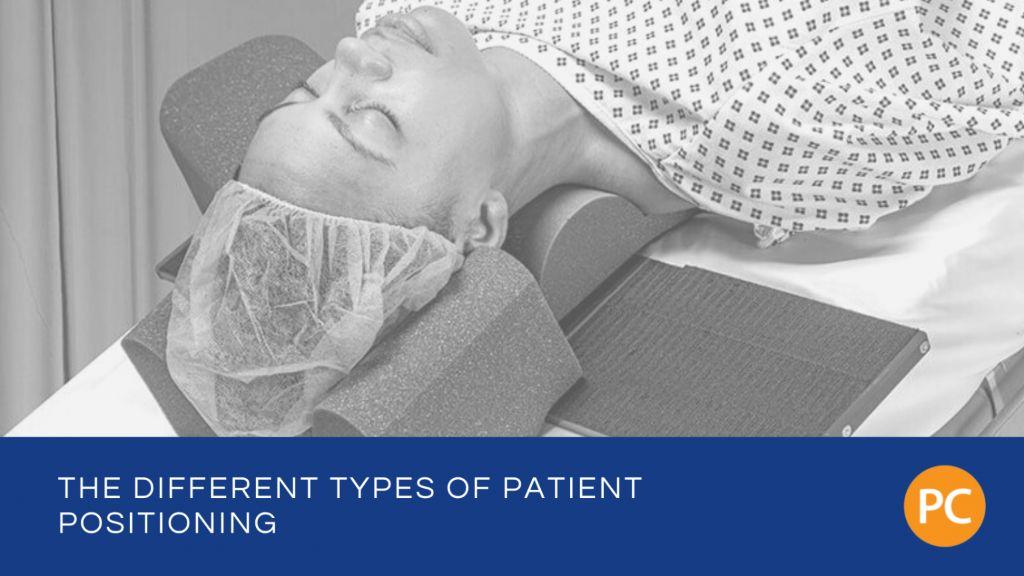

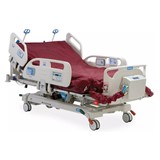










-160x160-state_article-rel-cat.png)


